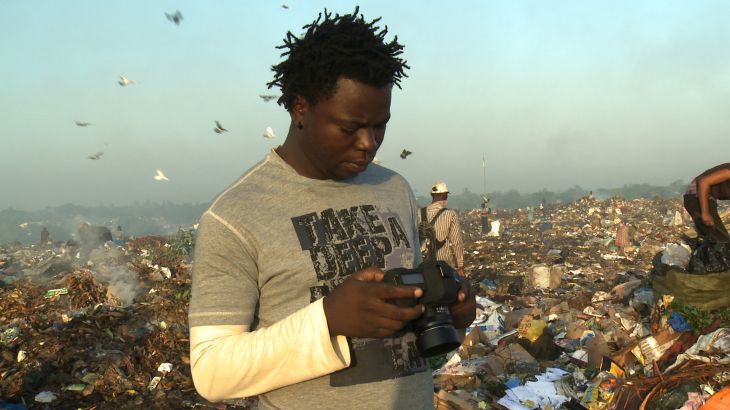
Mario Macilau: A Unique Gaze
Growing up poor in Mozambique, Mario’s images explore social issues and focus on the country’s soaring inequality.
Filmmaker: Francois Verster
Mario Macilau is a Mozambican photographer gaining international recognition for his pictures which are described as “alarming and provoking, arresting and engaging, public and private but, above all, utterly human”.
Keep reading
list of 4 itemsUK returns looted Ghana artefacts on loan after 150 years
Fire engulfs iconic stock exchange building in Denmark’s Copenhagen
Inside the pressures facing Quebec’s billion-dollar maple syrup industry
The film encounters Macilau at a time when his artistic output seems to be taking a giant leap into deeper, more powerful territory – homelessness.
We follow him as he travels to Chokwe to see the damage done by huge floods, and documents the lives of people who live and work in one of Maputo’s largest rubbish dumps.
Growing up in poverty, Macilau spent long periods sleeping on the street and there is something of his own experience staring back through the eyes of his subjects, giving him a unique gaze – one that balances direct social action with the mystery and unknown possibilities offered by art.
This film provides exposure to the work of an important young artist, the social issues his images explore, and the man behind the work.
FILMMAKER’S VIEW
By Francois Verster
The South African photography scene has been a vibrant one for many decades already, and there are a number of young photographers who have recently had significant international success.
But as with South Africa’s growth and development generally, the interest in these photographers tends to overshadow the work of new artists from other countries in the region. So for a South African like me, it has been both a good adventure and a pleasure to work with an inspiring upcoming photographer from a neighbouring country.
Much documentary photography in Southern Africa seems to be about moving away from engaging with social problems toward a stylised and self-referential debate about representation itself. This is often done using the beautiful and glossy large format film that suits coffee table books and interior designers willing to pay big money for prints.
By contrast, Mario Macilau’s photographs of real issues and real problems exude an unusual freshness and emotional connection. His eye is primarily an artistic one, but with his attention to detail and astounding framing, he captures the intense social reality of contemporary Mozambique, and Africa. Ultimately, what gives his photographs their power is their sense of both mystery and intense disturbance.
Economically, Mozambique is following the same pattern as South Africa and the wider region. The globalisation favoured by the rich emphasises economic over human development. This has radically increased the cost of living and therefore widened the gap between the rich and poor. As Mario puts it: “There is no longer a middle class in our country”. His pictures aim to confront this gap; the people who appear in them announce themselves unapologetically, with dignity, with rage.
Growing up as a poor and, for the most part, fatherless kid, Mario spent long periods sleeping on the street with homeless children – and I sense his own experience staring back at us through the eyes of his subjects. This is an “African gaze” which resists stereotypes and inhabits the world of its subjects; a gaze balancing direct social action with the mysterious possibilities offered by art.
Unlike many other aspiring African artists, Mario is not interested in living in Europe. His family and country are core elements in both his life and work. While funding will often come from foreign sources, the audience that he wants to connect with are local ones.
We filmed over two weeks in Maputo, Bilene and Chokwe with a very small crew. The idea was to observe how Mario negotiates the different worlds of a Mozambican artist. We saw how he moved smoothly between the modest barrio of Polana Ganico – where he lives with his mother – and Maputo’s often ostentatious art scene, and made it a core part of the film. Both he and his family were astonishingly open in granting access to our film crew. In his words, he has “nothing to hide”.
My hope is that this film will give exposure to the work of an important young artist, to the social issues he explores, and also to the person behind the work – someone who is likeable, warm and always thought-provoking.